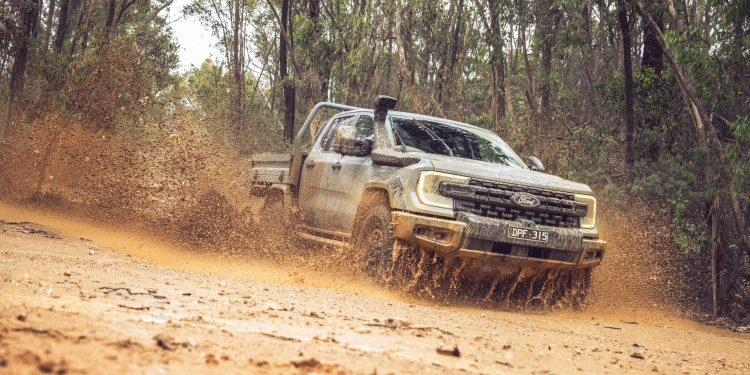Ford Ranger Super Duty first drive: the most capable ute of all time?
Words Andrew Sluys | Images Supplied
As the name suggests, Ford’s ‘Super Duty’ badge is serious business. It’s a moniker that has only ever been used on F-250, F-350, F-450, and F-550 trucks manufactured in North America.
Not even the iconic F-150 was allowed to use it. So when Ford Australia announced plans to produce a Ranger Super Duty, it quickly became a big deal.
With lofty targets come even loftier budgets, and it quickly became apparent to the team at Ford Australia that they were going to need to prove to the US head office that this Ranger Super Duty could live up to its name.
After a lot of market research, the targets soon became clear for the Ranger Super Duty; it needed to have a GVM of 4.5-tonnes, be able to tow up to 4.5-tonnes, and be able to travel further off-road than any Ranger before it.
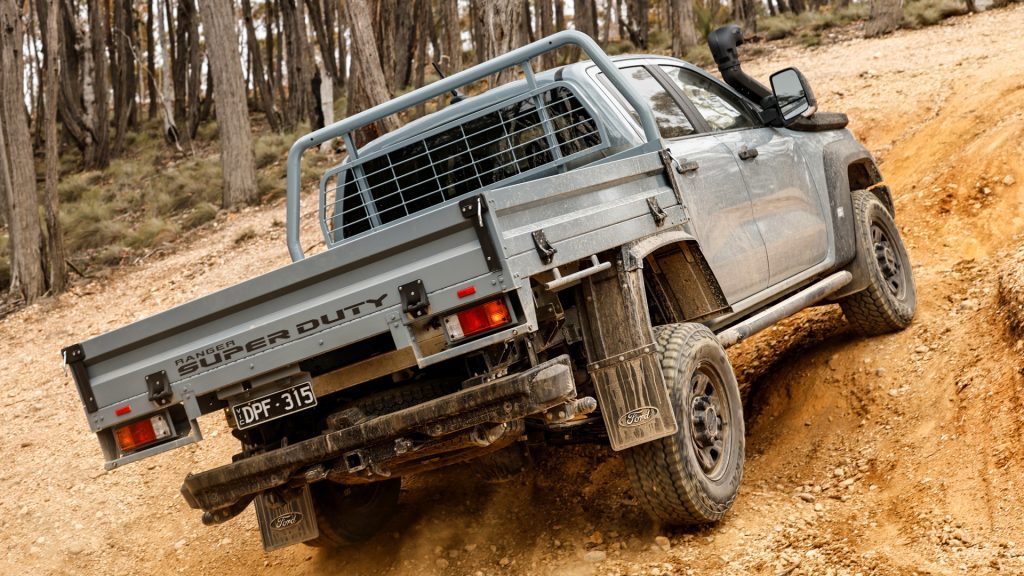
Once a prototype was finished, the team set about testing it in some of the harshest Australian conditions they could find. This included taking the Super Duty on trails Ford hadn’t used before during off-road testing, and running autonomous 24-hour tests at GVM across the Silver Creek track at the brand’s Victorian Proving Grounds.
Numerous examples of rigorous testing regimes were provided, each with a more obscure Australian location — but it was clear that it had more than proven itself.
Starting at the bottom, only six per cent of the frame from a standard Ranger has been carried over to the Super Duty. It uses thicker gauge steel, has more reinforcement points, and the front steel bumper has been integrated into the chassis.

It also gets heavy duty underbody protection, including a bash plate, an engine shield that also covers the front diff, a transmission shield, and a fuel tank plate that can take the entire GVM if it gets snagged.
The axles, driveshafts and brakes have all been upgraded to handle heavier loads, with the latter making use of an 18-inch system. The 18-inch steel wheels are wrapped in 33-inch all-terrain tyres, and require eight lugs to reach the clamping force needed to achieve the GCM rating.

Adding to its capabilities, it gets locking differentials on the front and rear axles, and two dual-rated recovery hooks at both ends. It also gets a 130-litre fuel tank, which is 50-litres bigger than that of a standard Ranger.
Beneath the bonnet, this Ranger Super Duty retains the same 3.0-litre turbo diesel V6 as the standard model. In this case, it has been de-tuned to 154kW to meet emission standards required for heavy vehicles. It requires AdBlue for this same reason.

Torque has been kept at 600Nm, and the engine is paired with a ten-speed automatic transmission. To meet cooling requirements, the radiator fan power has been increased by 25 per cent over regular Ranger V6 variants.
In New Zealand the sealed snorkel will be optional, but allows for a wading depth of 850mm that matches the Ranger Raptor. Breathers from all the powertrain componentry have also been raised above this height. Ford Australia notes that it tested at this wading depth and above in order to be certain of it.

On the inside, the majority of things carry over from the standard Ranger, plus a few handy inclusions. It retains the 12-inch infotainment display with wireless Apple CarPlay and Android Auto. The same goes for the 8-inch digital cluster.
It also gets a wireless phone charging pad, and vinyl floor mats as standard. Additional features include the auxiliary switches on the roof, and the device mounting bracket beside the glovebox.
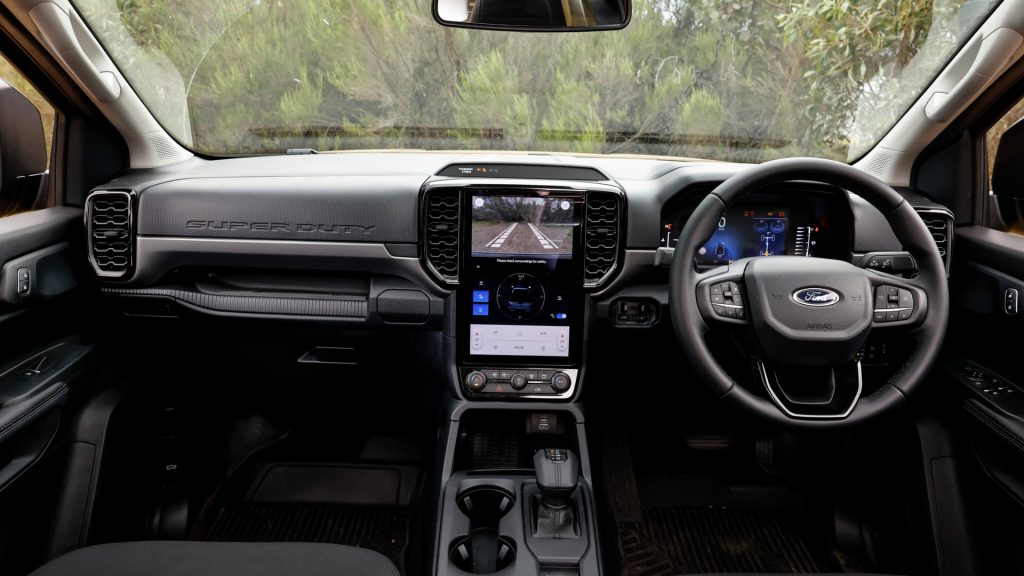
Arguably the coolest features lie within the screen, and are the Smart Hitch and Onboard Scales. Using ride height sensors, these functions show the driver exactly how much weight is being loaded on the tray with the scales, and the tow ball with the smart hitch.
The idea behind these is to make sure the driver is aware of what they’re carrying and to keep them within their legal limits.

All together, Ford is hoping that its done enough with this Ranger Super Duty to pull buyers away from traditional cab-over trucks and the big American pick-ups that tow massive amounts.
And while I can’t speak on whether or not they’ve done enough to convince the masses, I don’t find myself questioning much after experiencing the Ranger Super Duty on and off-road.
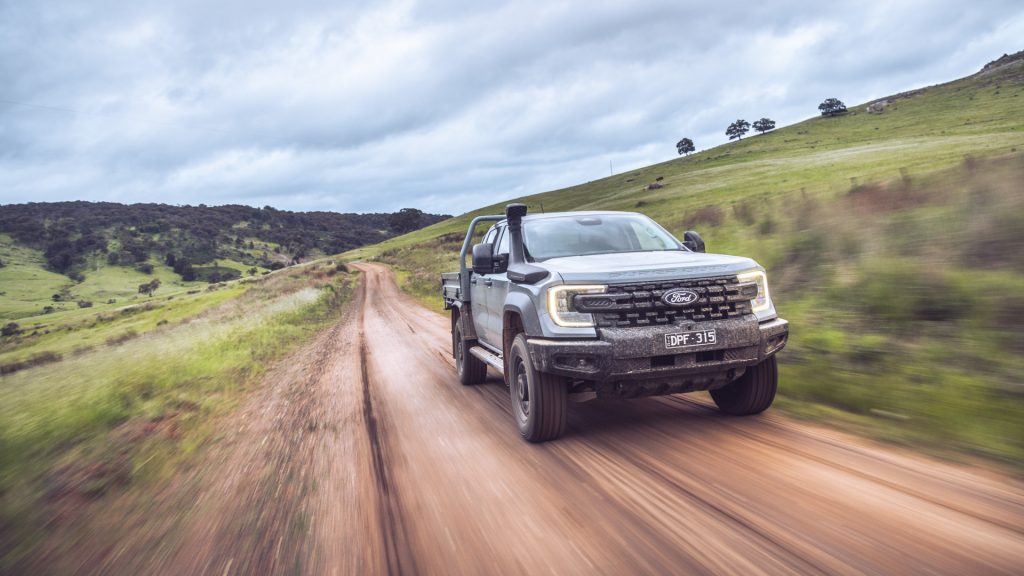
On the road, the Super Duty drives as any other Ranger would. It’s quiet, composed, and the dynamics even allow for drivers to find the limits of the all-terrain tyres. Speaking of which, they were pumped up to the recommended 45 PSI for the whole drive program (on and off-road), and felt comfortable in both scenarios.
Despite being down on power, the engine has more than enough grunt to get the Super Duty going. This isn’t to the point of something like that Ram 2500 with its 6.7-litre Cummins engine, but it doesn’t feel short of shove at any point.

The only scenario where it did feel strained was with 4-tonnes of digger behind it, but even then, it could still hit 100km/h on a highway onramp. During this towing section, the transmission didn’t shift above seventh gear, but kept the engine within its power band. It also felt extremely stable on the road, and I didn’t experience any sort of sway at all.
Considering the Super Duty’s name, this towing ability felt adequate, but what I wasn’t prepared for was how well it went off-road. During the launch program in regional Victoria, the Ford team put us through some of the most impressive terrain I have seen.
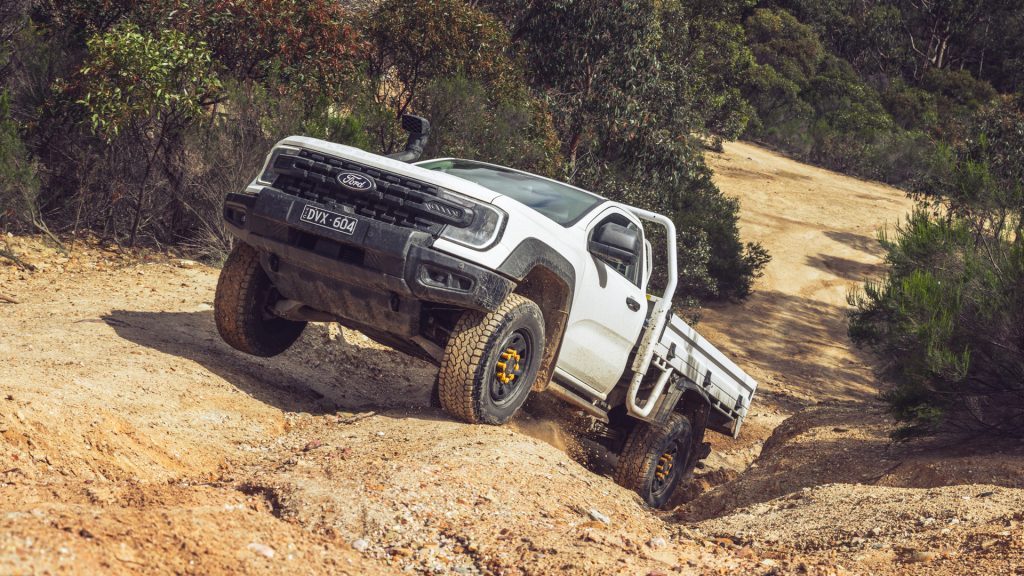
This included deep river crossings, rocky hill climbs, and scrambling across divots meant to simulate Wombat holes. Easily the most impressive aspect was a hill descent that had the Ranger scrambling for traction as we slid down it. For this we used the trail assist function, which works as an off-road cruise control.
Once we hit the bottom, we were told to turn around and head back up the hill that we had just slid down. With the trail assist set to a modest 12km/h, the Ranger set off, bumping and churning its way through the large rocks to the top.
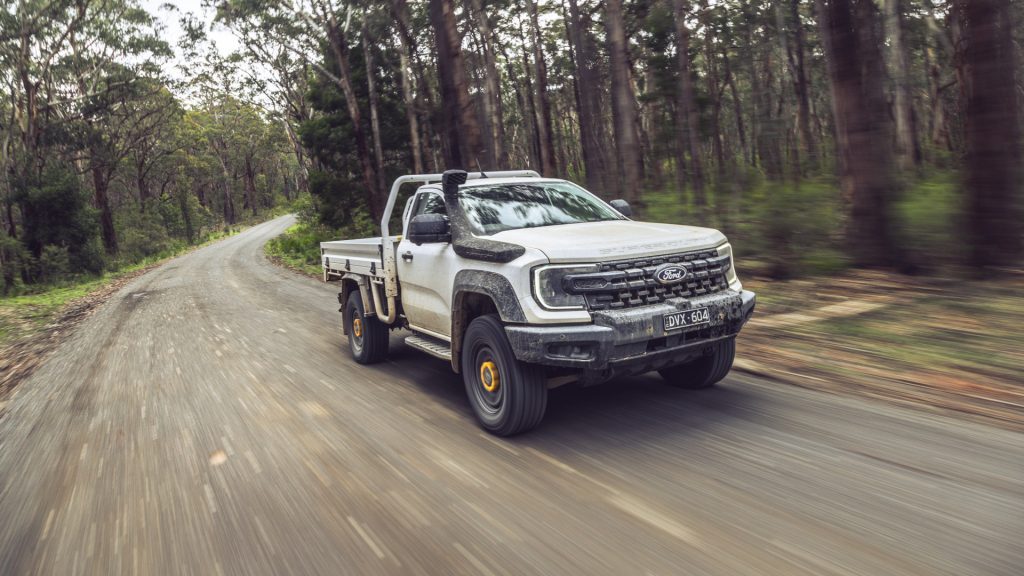
I was told after that a Ranger Raptor likely wouldn’t have made it up that trail, which is an impressive feat on its own, but only made more impressive by the fact the Super Duty did with 45 PSI in its tyres.
Though local pricing is yet to be released, if Ford New Zealand can get in the region of Australia’s circa-$90k with this Super Duty, it will be a strong competitor.
To think the large American pick-ups are North of $100,000 for a similar package, and the Toyota Land Cruiser 70 Series isn’t far off, they don’t make much sense anymore. Especially considering the lavish interior of the Super Duty that has been carried over from the standard Ranger.
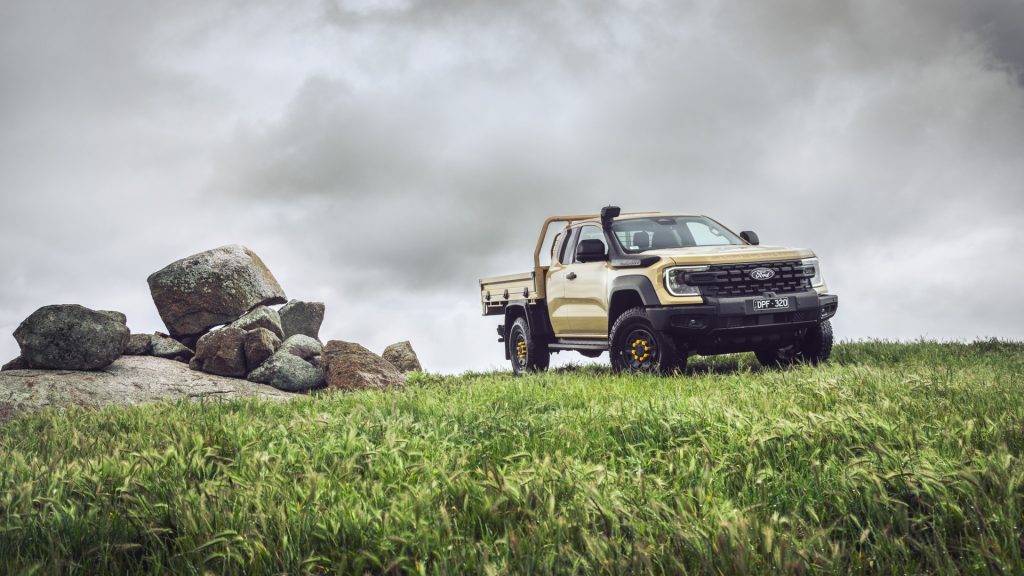
I’d say the biggest issue surrounding the Super Duty in New Zealand will be legalities of the GVM, pushing it into certificate of fitness(CoF) territory. As it has a GVM of 4.5-tonnes, it won’t qualify for warrant of fitness checks, and will have to be tested every six months under the CoF regulations.
Ford New Zealand is yet to release pricing for this model, and has mentioned that it is targeting a mid-2026 debut of this model locally.


